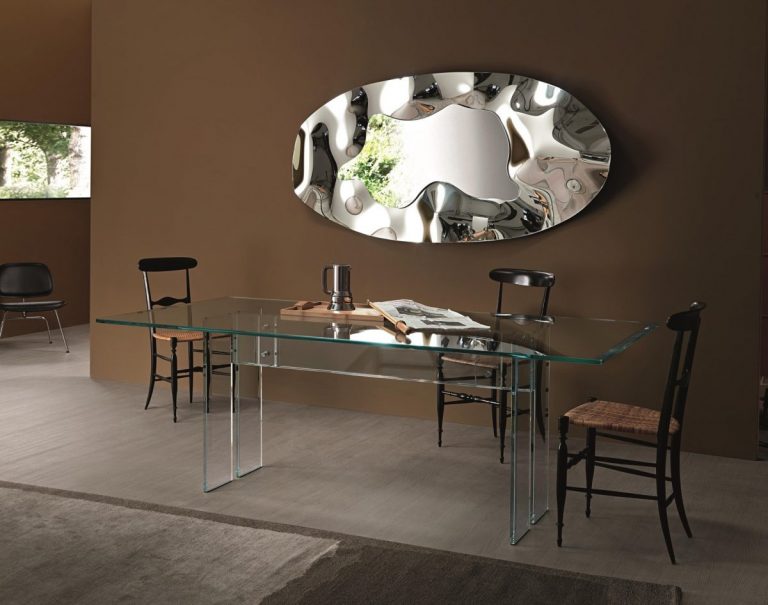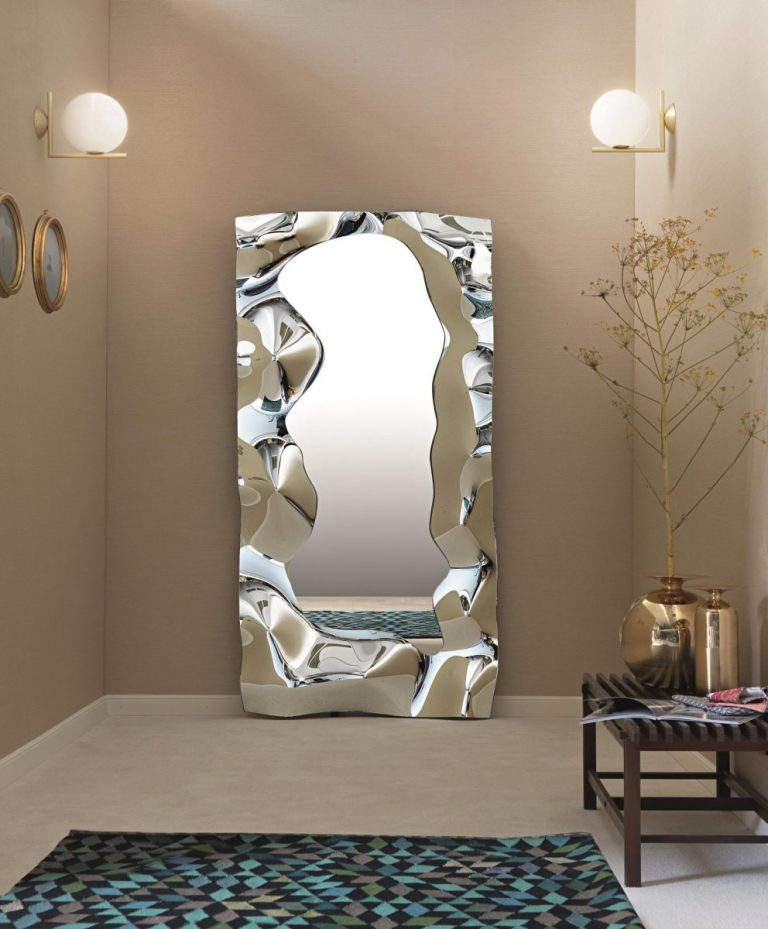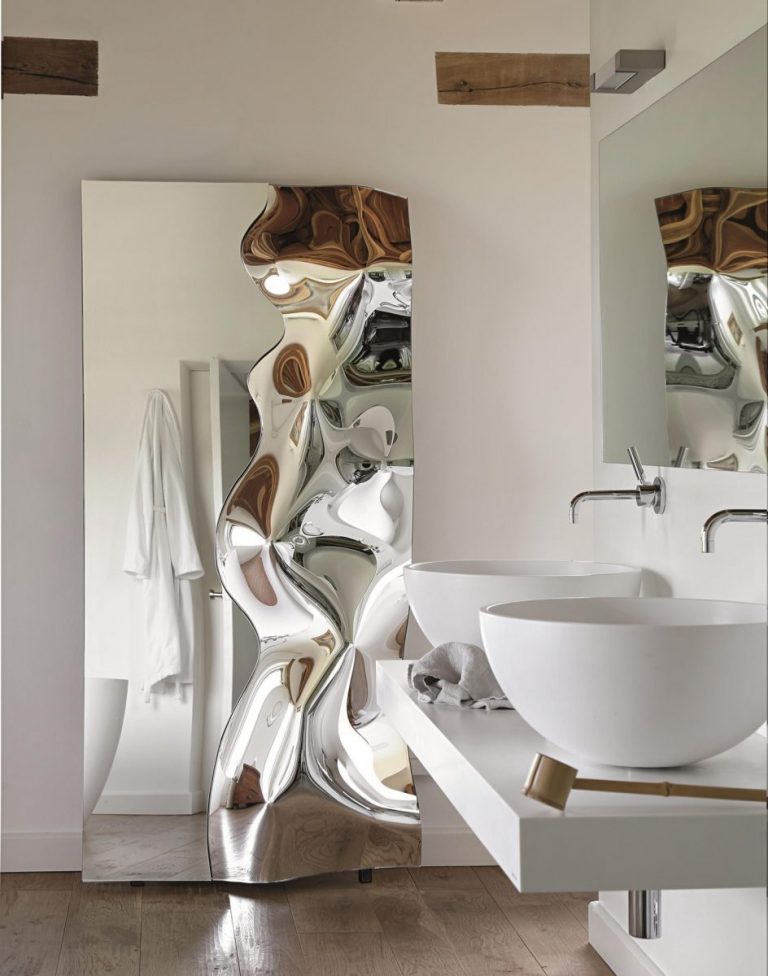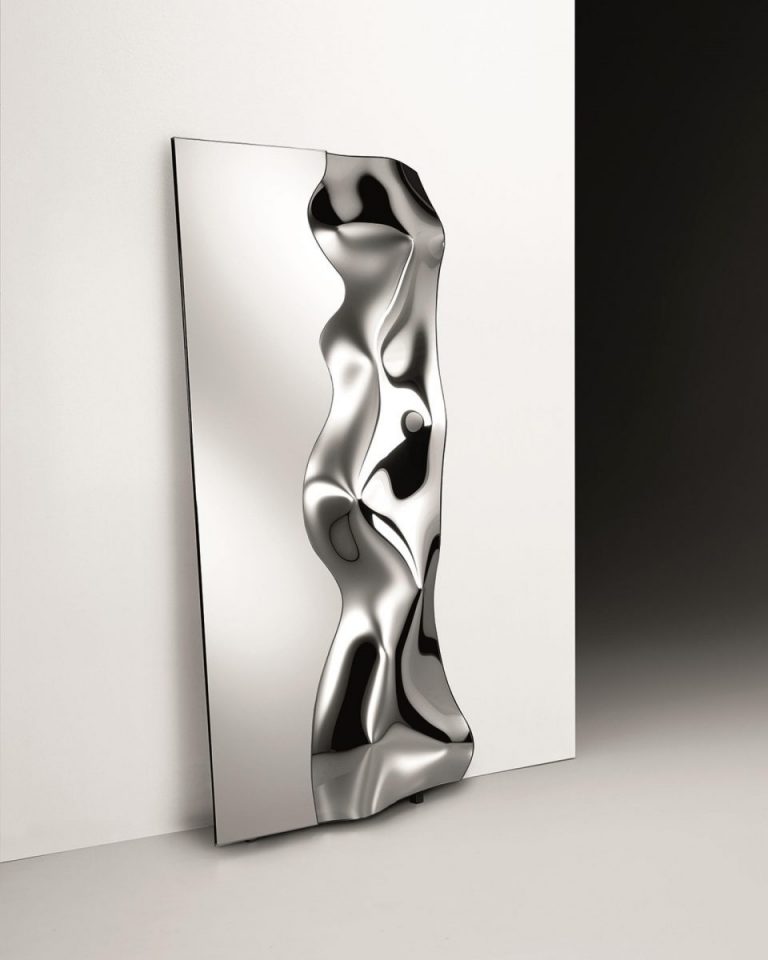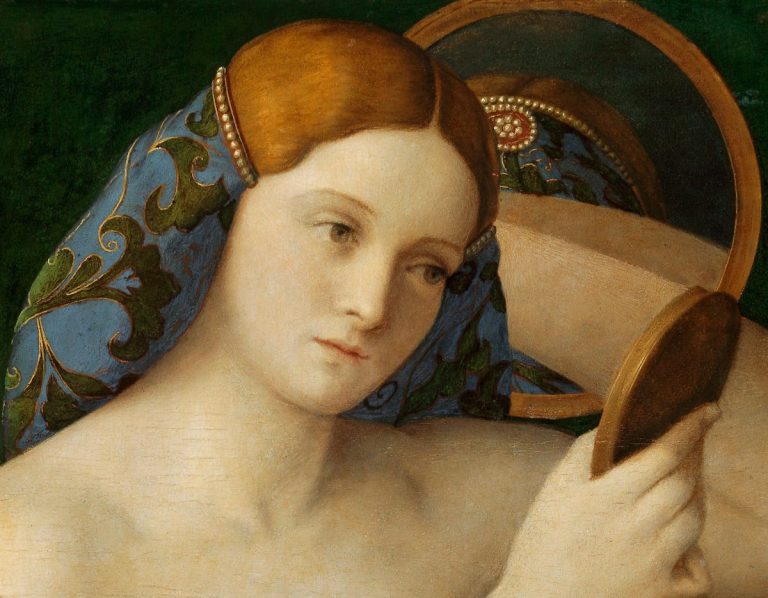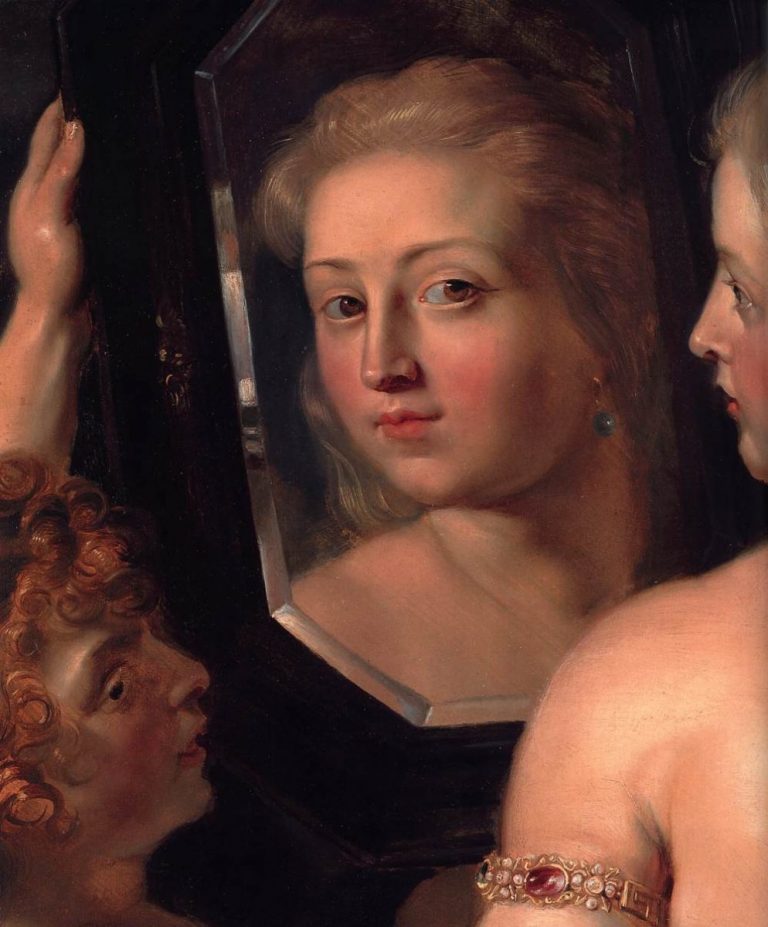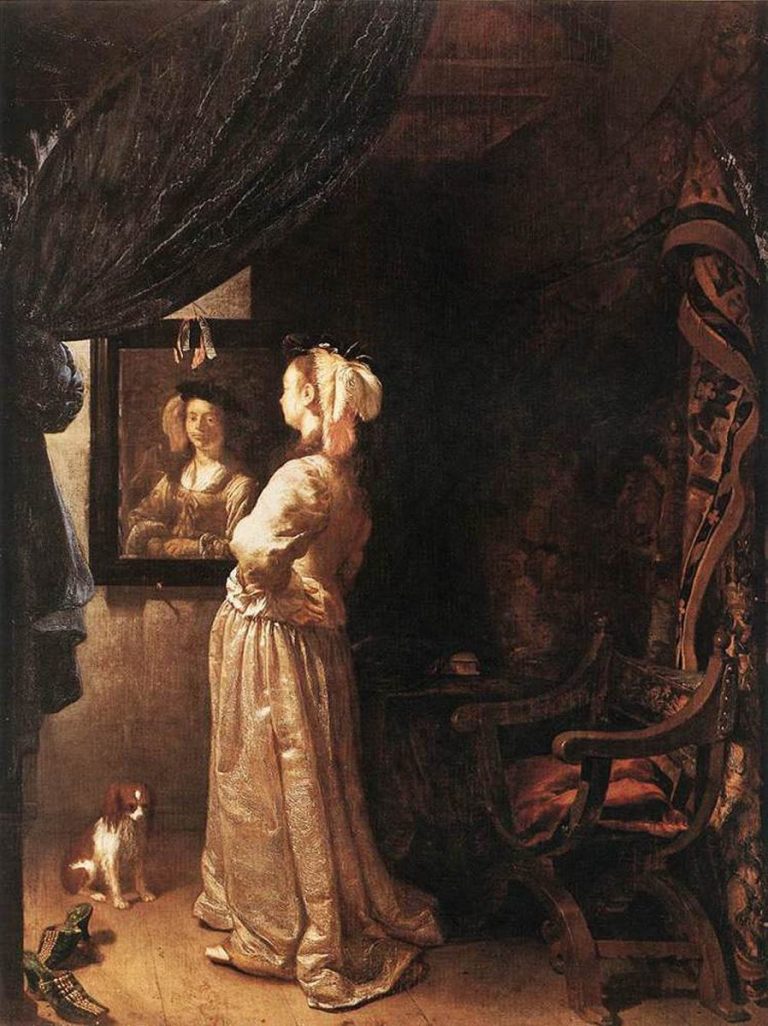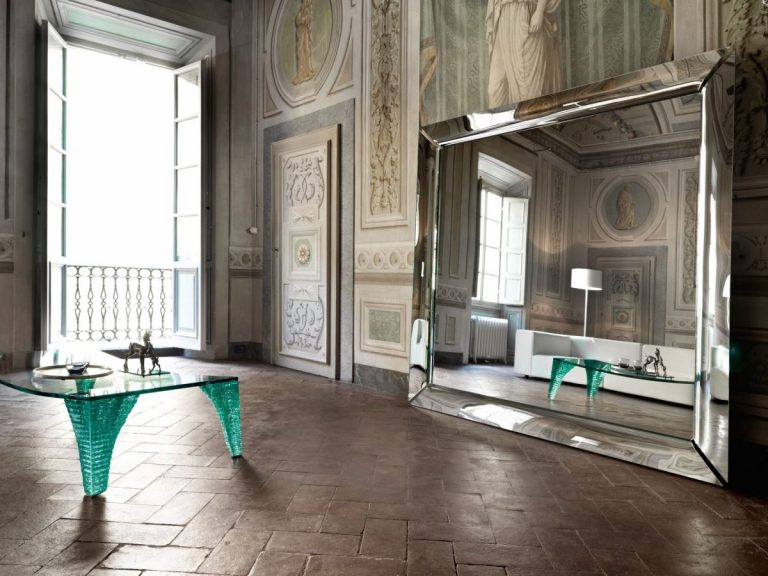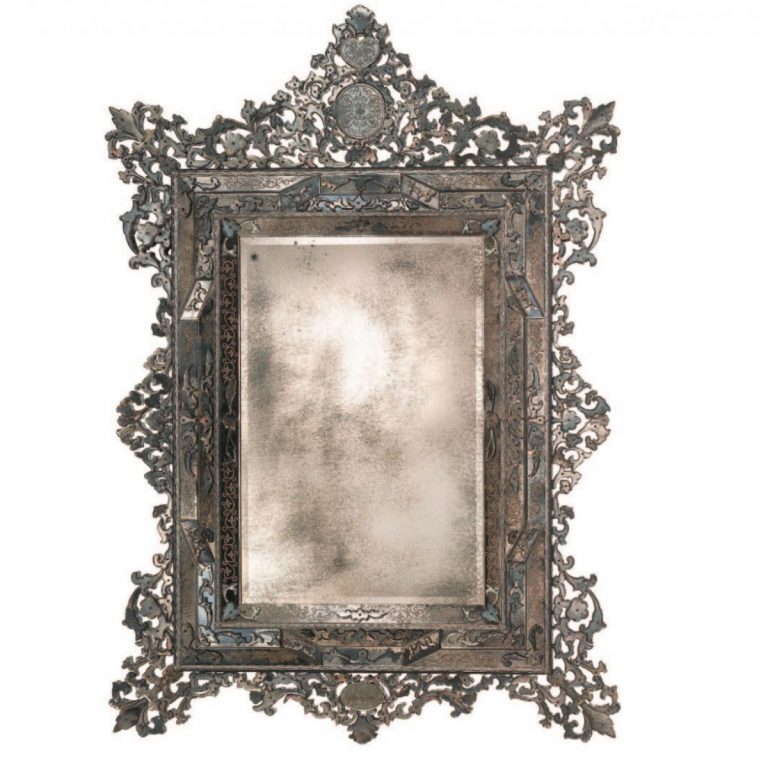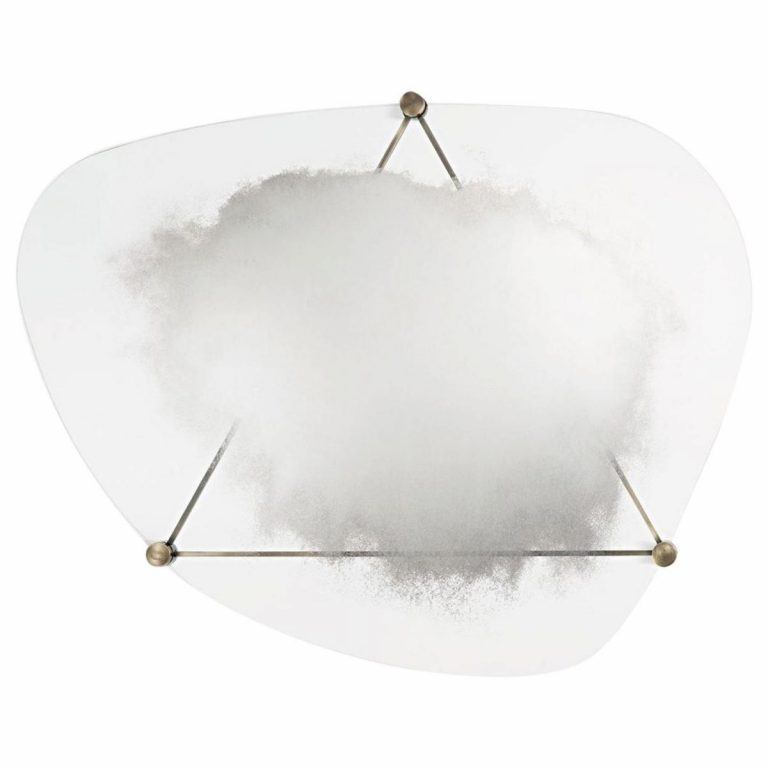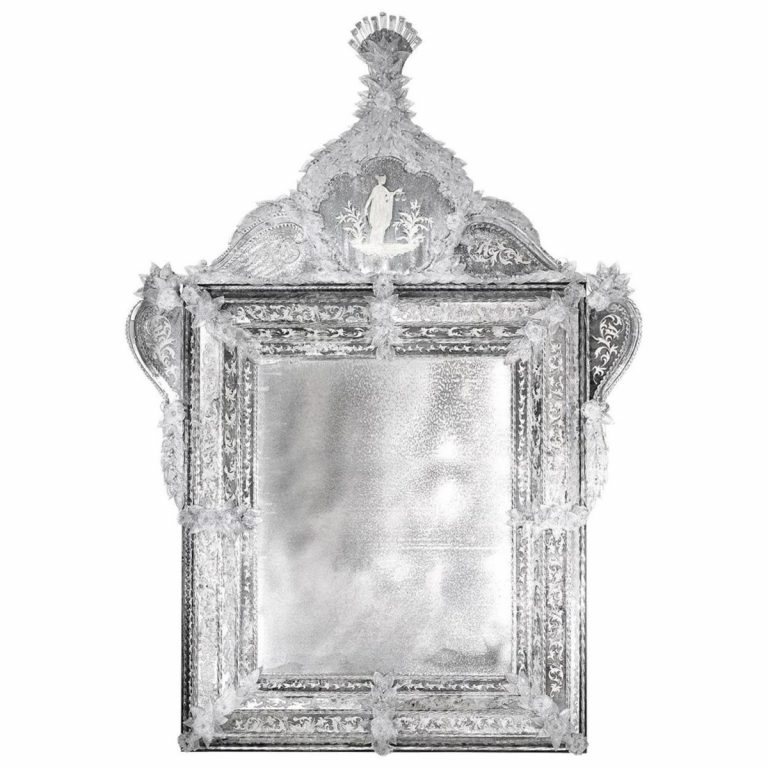It would seem, what can be simpler and clearer than a mirror and reflection in it? However, almost all human culture is held in mirrors. If it weren’t for them, we wouldn’t know so much about ourselves and the world.
Morning reflection
In the first morning moments between sleep and reality man is still defenceless, he wants to believe that he is entering a new beautiful day, and there will be only the most wonderful and close people. He gets up and goes to the bathroom, to the mirror. And there he is first met by his closest and most understandable person – he himself.
In the mirror designed by Paolo Riztsato in the legendary FIAM Italia factory, you can see at once eight beautiful people: the surface of this model consists of eight faces. So the Italian architect ironically painted the moment of our narcissism.
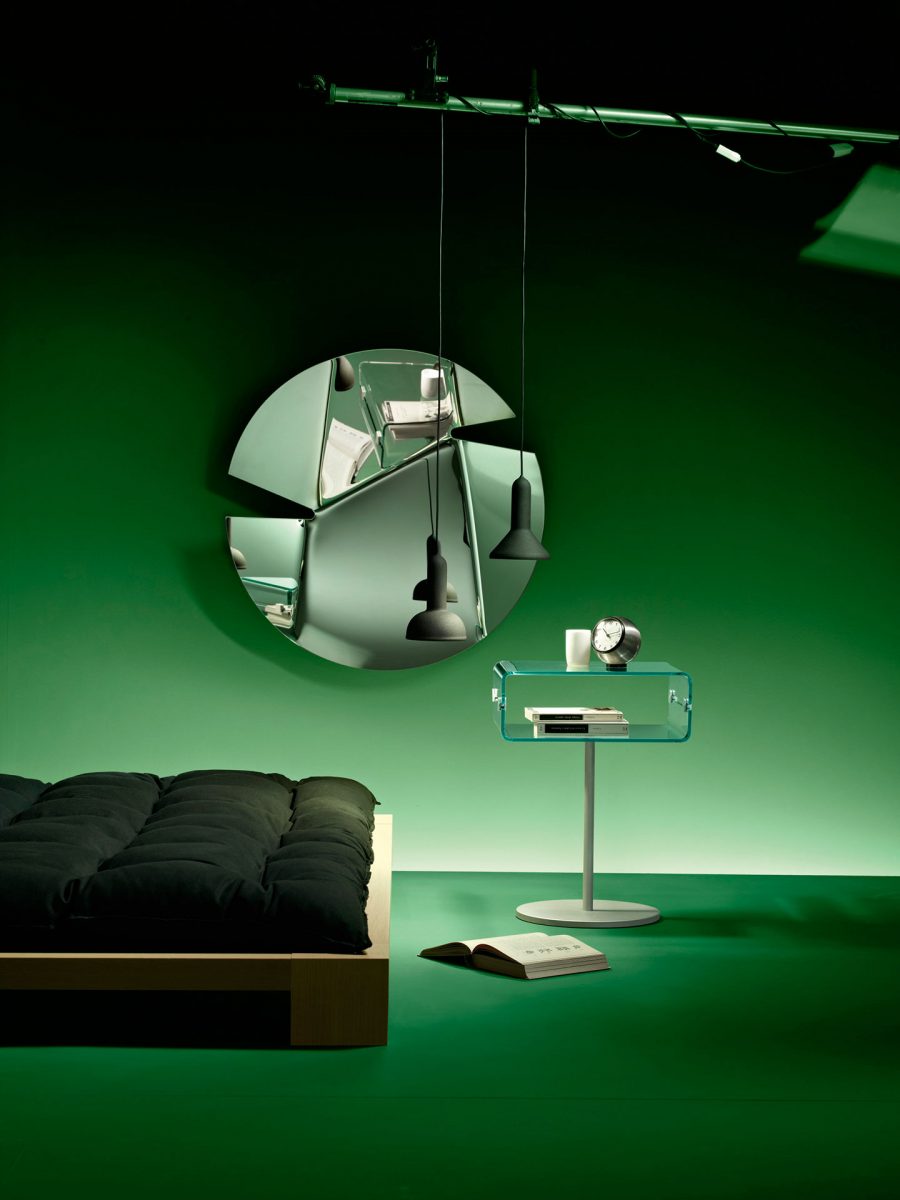
Beyond the glass
As a rule, in fairy tales or mystical stories, mirrors define the boundary between what happens here and now and something else beyond. It’s beyond, deep down, where you want to go, and even at the risk of your life.
It can be assumed that the mystical properties of the mirrors were attributed to them because the first mirrors did not give a clear reflection. «The picture» has been greatly distorted due to the material and methods of its processing. Manual glass casting techniques in ancient times did not give such an ideal surface and transparency as modern.
«Parents» mirrors were Venetians, who invented many centuries ago to polish silver sheets. There, in Venice, in the workshop of mirrors and glaziers, a mirror appeared in our understanding – a special silver composition applied to the transparent glass, which is then covered with a copper layer. Copper makes the silver mirror so radiant and festive, preventing it from leaving in the characteristic for silver greyish shade.
Venice on the surface
By the end of the 15th century, from 1492 onwards, the glass and mirrored workshops of Venice were concentrated on the island of Murano. It was because of safety – it was necessary to place furnaces, in which «boiled» glass, beyond the city line. Glass artists, carvers, glassmakers, mirrorers came to the island. For the time being, Venice kept its secrets as the apple of its eye.
It is natural that the Venetians for many centuries became mirrored monopolists and delivered their products, decorated with jewellery and Murano decorative elements, to the palaces of Europe. Glaziers bathed in honour: they are wealthy, respected (in historical documents even there is a note that their sons can marry noblewomen).
Stage appearance
When the construction of the Palace of Versailles began in the 17th century, the Venetians were invited to France. Until now we owe them «French» mirrors, which have become a world-famous brand, – in France was invented the design of a mirror made of jewellery-shaped multifaceted glass. By the way, in the antique markets of Paris, you can still meet «kids» – mirrors of that era, a kind of side business of the first French workshops engaged in the decoration of the magnificent palace halls.
An important period in the history of mirrors was the era of Art Deco. In modern catalogues you can find many replicas of the famous models of the time, when the best architects and decorators used mirrors, created by traditional Venetian technology, distributed in many factories in different countries.
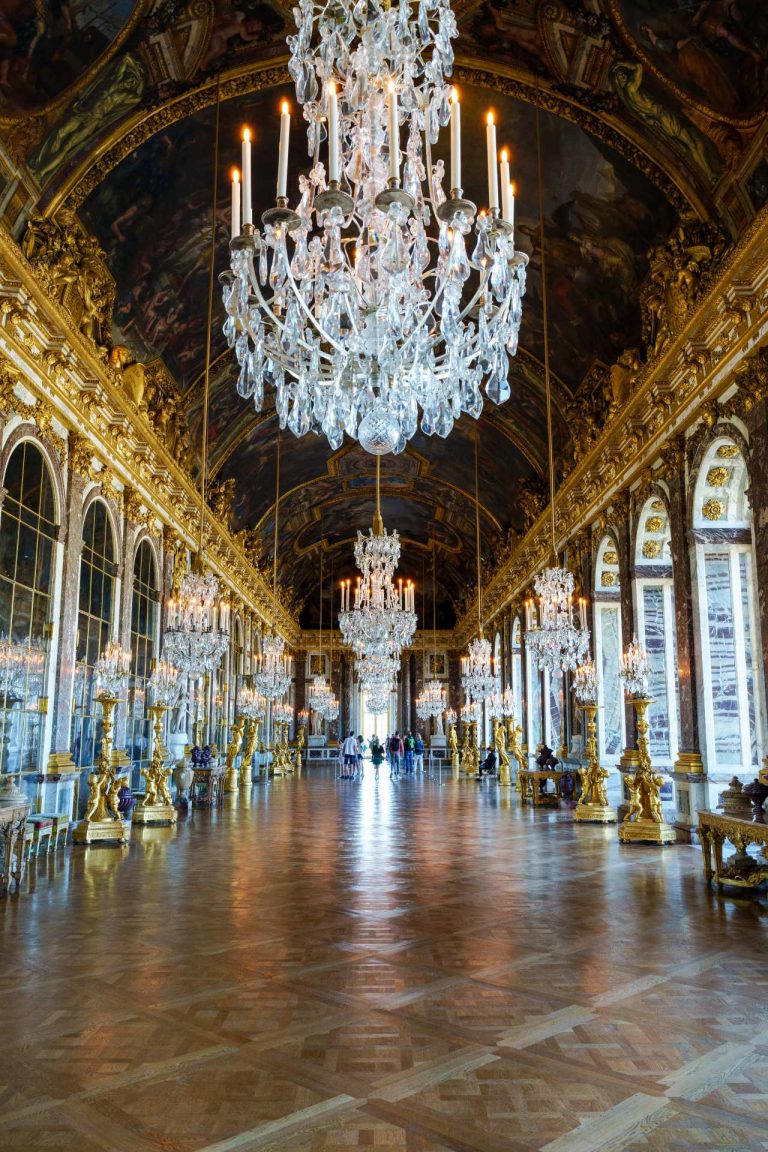
To make production cheaper and faster, many people sought to replace expensive components and simplified the technology. Our grandparents still remember «country» mirrors, which have black and glowed corners from moisture.
In the late 50s of the 20th century, with the advent of the float glass method, several factories began to produce the cleanest and sturdy glass by industrial method, and at the same time – almost any format.
History beats modernity
Ancient methods, sense of material, magical compositions and methods of their application retain modern masters, supporting eight hundred years of tradition. Factories in Italy and France receive magnificent mirrors with deep and pure «inner life» and a beautiful reflection. It is enough to put their products next to any low quality mirror.
The best beauty salons in the world in their brands definitely mention Caadre Philip Stark – a mirror bestseller of the last 25 years. The uniqueness of the model designed by the designer for the FIAM is in the curved glass frame and mirrored coating made in Venetian technology.
Towards reflection
Venice disappears in the mist when from the waterfront Fondamente Nove a boat is leaving to the island of Murano, where once successful legendary glass factories located, which today one by one pass into the ownership of expensive chain hotels. Ten years ago, the famous glass cutter school closed after not recruiting students.
Perhaps Venetian mirrors per se will soon remain exclusively as antique rarities. Now in Venice there is only one factory, Arte Veneziana, which has in its state mirrorers, precious artists, cutters, and carpenters. Here workers continue to create accurate replicas of Venetian mirrors, imitating even the effect of ageing.
Photo: press service
